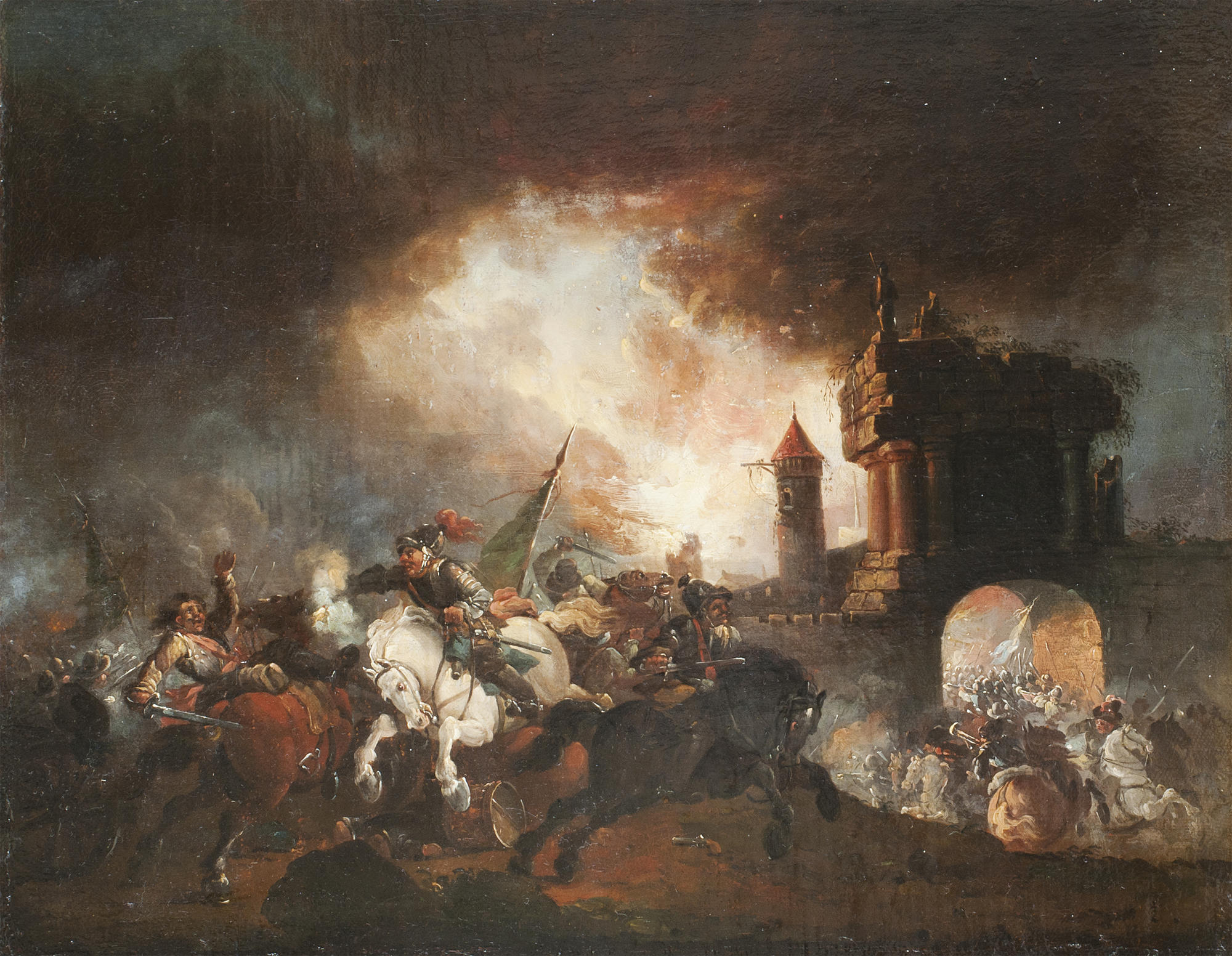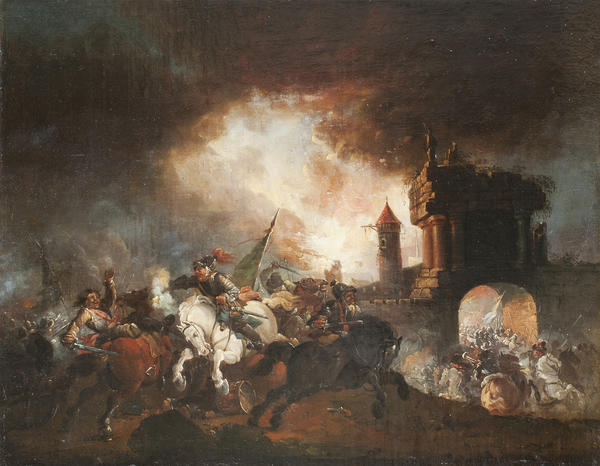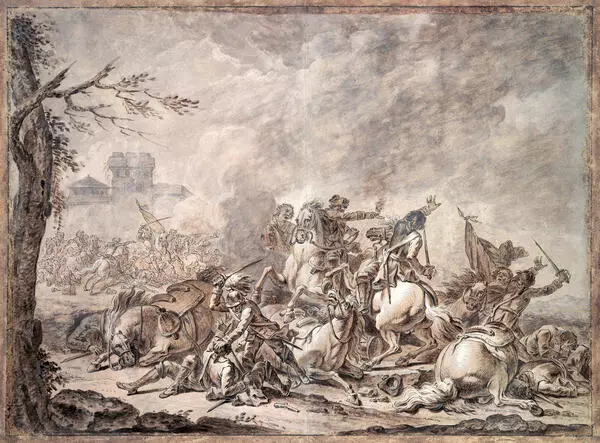In the museum inventory it is recorded as a painting of unknown artist. Based upon the identified signature, the picture was considered to be that belonging to the famous battle painter, Jacques Courtois (1621-1676). The contemporaries nicknamed him as Bourguignon (Burgundian). The painting The Battle of Constantine of artist Raffaello Santi and battle scenes of the Italian artist Salvator Rosa produced a tremendous influence on the development of the artist. According to some data, at one time Courtois retreated to a monastery and painted iconic images neither of which, however, has been preserved until present time.
It is difficult to trace the chronology of his creativity, since Courtois almost never initialed and dated his paintings, however, the pieces of art the authorship of which is undisputable demonstrate the highest quality and acknowledge the reputation of the first battle master of Europe. The name of Courtois can be easily attributed to each battle painting of the 17th century, particularly since the master rarely initialed his works. He reformed this genre by bringing diversity, vivacity and realism of characters and skill to involve a spectator into the act. The genuine works of the artist, always impeccable in terms of quality, justify high reputation he enjoyed during his lifetime.
A Frenchman by birth, at the age of 15 Courtois сame to Italy and stayed there forever. He enrolled in soldiers in order to better get to know a military life and to paint battle scenes. They tell about the painting method of Jacques Courtois that he rarely exerted himself to make sketches and drawings; was in a habit to draw a contour with a curved brush handle, after which he didn’t leave the painting until its completion. The works of the master were highly appraised — the Duke of Tuscany honored his self-portrait — where the battle painter depicted himself in a monk’s habit — to be placed in the Uffizi Gallery. Courtois’ works were mirrored and even forged. Benois wrote that usually it was like this: if a painting portrays a hot fight of cavalrymen and painted with well-known bravura, immediately such painting was named Bourguignon while often it appeared to be either a work of one of his imitators or simply a template “concoction” of some forger. Trustworthy works of Bourguignon can be viewed in the museums of Louvre, Lyon, Hermitage, Munich, Vienna, Turin, Dresden and Prado. Most probably, The Battle is a work of one of subgenre painters. The stylistic and technological features enable to attribute this painting to late 17th century or early 18th century. The question about authorship is still open.
It is difficult to trace the chronology of his creativity, since Courtois almost never initialed and dated his paintings, however, the pieces of art the authorship of which is undisputable demonstrate the highest quality and acknowledge the reputation of the first battle master of Europe. The name of Courtois can be easily attributed to each battle painting of the 17th century, particularly since the master rarely initialed his works. He reformed this genre by bringing diversity, vivacity and realism of characters and skill to involve a spectator into the act. The genuine works of the artist, always impeccable in terms of quality, justify high reputation he enjoyed during his lifetime.
A Frenchman by birth, at the age of 15 Courtois сame to Italy and stayed there forever. He enrolled in soldiers in order to better get to know a military life and to paint battle scenes. They tell about the painting method of Jacques Courtois that he rarely exerted himself to make sketches and drawings; was in a habit to draw a contour with a curved brush handle, after which he didn’t leave the painting until its completion. The works of the master were highly appraised — the Duke of Tuscany honored his self-portrait — where the battle painter depicted himself in a monk’s habit — to be placed in the Uffizi Gallery. Courtois’ works were mirrored and even forged. Benois wrote that usually it was like this: if a painting portrays a hot fight of cavalrymen and painted with well-known bravura, immediately such painting was named Bourguignon while often it appeared to be either a work of one of his imitators or simply a template “concoction” of some forger. Trustworthy works of Bourguignon can be viewed in the museums of Louvre, Lyon, Hermitage, Munich, Vienna, Turin, Dresden and Prado. Most probably, The Battle is a work of one of subgenre painters. The stylistic and technological features enable to attribute this painting to late 17th century or early 18th century. The question about authorship is still open.





